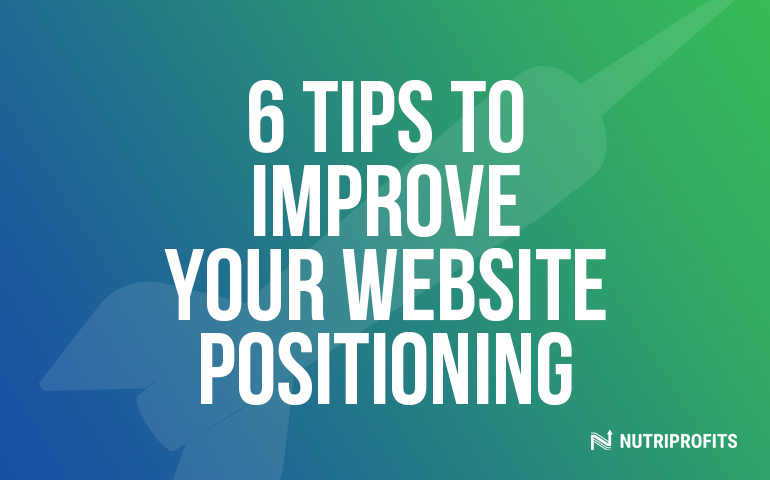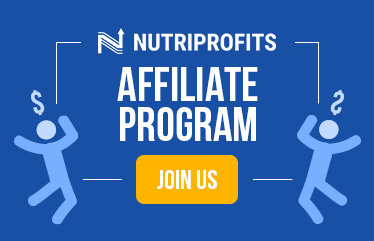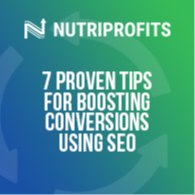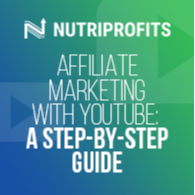Everyone wants at least one person to click on their website and read what they’ve got. Not only would clicking on an affiliate marketer’s website garner more exposure towards said marketer, but it can also make them some money.
How would that work out, though? When searching on Google, less than one percent of people go to the second page. Instead, most people click on the top three results.
If that sounds more desirable, here are six tips to improve your website positioning and rank higher.
What is Search Engine Positioning?
Search engine positioning is when search engines optimize pages to rank higher based on specific keywords. In other words, websites that use relevant keywords tend to pop up on the first page.
How does this work? Besides using specific keywords, a website’s legitimacy and structure influence how the search engine positioning optimizes it. Every search engine has its own algorithm for analyzing:
- Content
- Structure
- Relationship with other sites
Since Google is the most popular search engine, it would make sense to follow the rules for ranking well there. That way, the affiliate marketer's website can rank well on other search engines since most are like Google.
To get into more detail, search engines start with a web crawl to discover some information. They index any web pages found and sites linked. Then, when someone searches for something, the search engine provides what it thinks would be relevant for whatever is being searched.
Factors affecting which pages are pulled include:
- Keyword usage and density
- Keyword synonyms and related topics
- Keywords in URLs, meta descriptions, and meta tags
- Backlinks from other sites
- Loading speed, mobile-friendliness, and technical SEO
- The site’s trustworthiness
- Search history
- Searcher’s location
Why Does It Matter?
Simply put, the top three results get the most clicks. More clicks mean more traffic. More traffic means more leads, conversations, and fame for the affiliate marketer’s website. All this can lead to more sales and money.
If this sounds desirable, here are six tips for improving your website’s position.
Tip One: Hiring an SEO professional
Search engine optimization (SEO) improves a website’s ranking on search engines. However, improving a website’s SEO ranking alone can be difficult work.
That’s why it’s best to hire an SEO professional. When choosing an SEO professional, it’s preferable to hire someone with:
- Experience in the affiliate marketer’s industry
- References and their contact information
- Proposals for work outlines and cost
Hiring a SEO professional doesn’t have to cost much. If that’s not enough, conducting an SEO content audit can help. SEO content audits help determine which pages to keep, optimize, or delete. They have three main phases.
- Creating an inventory and an audit of pages and posts on websites
- Analysis
- Summarizing and reporting
SEO content audits can tell the affiliate marketer what to change to improve their search engine position. This may include optimizing meta tags on outdated posts, adding specific content to blog posts, or deleting irrelevant or underperforming pages.
Tip Two: Optimizing Websites for Search Engines
An affiliate marketer’s dream is to have many people clicking on their website and buying something through a link. That’s why it’s essential to optimize a website for search engines.
Other than using relevant keywords, the affiliate marketer can optimize their website for search engines by:
- Ensuring the website’s code is clean and organized
- Submitting the website to search engines
- Creating quality content, including relevant keywords
Though keywords are crucial, there’s such a thing as too much. Using keywords too often is manipulative to search engine results.
When it’s time to optimize a website for search engines, it’s best to submit it to search engines and directories. It’s a simple and effective process to improve a website’s position.
There are two kinds of directories: general and niche. General directories accept any website’s submission, while niche directories accept websites about a particular topic or industry.
If the affiliate marketer wants to use a niche directory about beauty products, they'll search "beauty products directory." These directories will have submission forms for websites that need the marketer's:
- Name
- Address
- Phone Number
- Website URL
Some might ask for a brief description of the affiliate marketer's products or services. Please make sure to fill out these forms accurately and completely.
Tip Three: Improving Core Web Vitals
Google uses Core Web Vitals to determine how someone uses a page. The better the Core Web Vitals are, the more likely the affiliate marketer's website will perform on search engines.
These vitals zero in on:
- Page-loading speed and performance
- The ease of interacting with a page
- The page’s visual stability from a user’s perspective
It's vital and straightforward to check a website's performance. All the affiliate marketer has to do is go to Google Search Console. The marketer can see which URLs are good, poor, or need improvement.
If a URL is poor or needs improvement, then the marketer can click on PageSpeed Insights, where it gets a score of 100 for desktop and mobile. The marketer also gets an opportunity to improve their website's score and performance.
Tip Four: Writing Optimized Meta Tags
Meta tags, like meta titles, describe a webpage's content. People see meta titles when they search for something on search engines. Under those are meta descriptions. Both are crucial for SEO since they tell search engines what the webpage is about and compels people to click on the link.
Meta tags are like website titles. They're the first things people see when searching for something. They also help search engines understand an affiliate marketer's content.
Suppose the affiliate marketer's focus keyword is "beauty products." An excellent meta title could be "X Beauty Products for Certain Seasons." It's best for meta titles to be around 50-60 characters long and have the brand name at the end.
As for meta descriptions, they entice people to click on a webpage with a short, yet accurate, summary of what it’s about. Ideally, meta descriptions should be around 80-160 characters long and have something like “read more to find out” at the end.
Tip Five: Using Internal Links
Internal links, or hyperlinks, are links between the affiliate marketer’s website posts or pages. They help people navigate, establish information, and spread link equity.
The more links the affiliate marketer's website has to a specific site, the higher the page's ranking will be. This is like a backlink to the marketer's website, which will improve their ranking with search engines. It's a win-win situation for everyone involved!
Some pages, like service or product pages, don't get as many natural backlinks compared to blog posts. That's why it's crucial to point more internal links toward them.
Suppose the affiliate marketer is writing a blog post about beauty products. They might post an internal link to where people can buy these products. Those are called anchor texts.
Anchor texts are also fantastic at creating internal links. Let's say the affiliate marketer is making a post on how to get rid of acne. They might link to another post by hyperlinking the phrase "how to get rid of acne."
Using relevant keywords for internal links is best rather than "click here." That way, people can navigate between the affiliate marketer's pages and search engine crawlers to understand a website's structure.
Tip Six: Building Backlinks
As stated before, backlinks are vital for improving a website's search engine position. That's because they're links from other sites pointing to the affiliate marketer. The more high-quality backlinks a website has, the more likely it is for Google to trust them.
If other people are linking back to the affiliate marketer’s website, then that must mean they think the marketer’s content is high-quality and relevant. Google picks up the same implication, which increases the marketer’s position in search engines.
There are three ways to build backlinks–black hat methods, white hat methods, and resource link building.
Black hat methods go against Google’s policies. One black hat method that’s not recommended is buying backlinks, which is considered cheating.
White hat methods involve broken link building. This involves analyzing another person’s website, finding a broken external link, and suggesting a replacement with the affiliate marketer’s content.
Resource link building is when the marketer reaches out to a site with a resource page and suggests placing one of their resources on that webpage.
Conclusion
Everyone wants at least one person to click on their website and read what they’ve got. Not only would clicking on an affiliate marketer’s website garner more exposure towards said marketer, but it can also make them some money.
All it would take is hiring an SEO professional, optimizing a website for search engines, improving Core Website Vitals, writing optimized meta tags, using internal links, and building backlinks.





.jpg)

-1-1.jpg)